On Friday, March 20th at 6:45 PM spring arrives in the north. The March equinox marks the moment the Sun crosses the celestial equator – the imaginary line in the sky above the Earth’s equator – from south to north. It is also at spring equinox that people all over the world can see the sun rise exactly due east and set exactly due west. While the sun may be predictable, March weather is not. In fact, March is appropriately named for the Roman war god, Mars. March is a month of battles between warm and cold, between winter’s refusal to leave and spring’s insistence on coming. So here’s a Field Guide to March and signs of spring.
March migrants
As winter visits begin to move northward, birds from the south begin to arrive. One of the earliest spring migrants, the Eastern Phoebe returns to northeastern North America around mid-March. The males precede the females and begin immediately to establish their territories and sing their spring song. Nest building begins soon after the female arrives. She builds the nest using mud, grass and moss, often on a building ledge. Sometimes she will renovate an old nest from the prior year.
Other early songbird migrants are the American Woodcock, Red-winged Blackbird, Common Grackle, Brown-headed Cowbird, and American Robin. We’re now getting reports of our first Song Sparrow returning. Check out the Vermont eBird bar chart for this month to find out what might else be arriving around you this month.
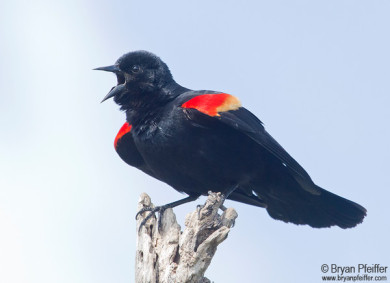
Red-winged Blackbird / © Bryan Pfeiffer
Red-winged Blackbirds are a textbook example of polygany (technically “many females”). A male Red-winged Blackbird mates with numerous females, each tending her own nest. The general hypothesis is that the females prefer the male defending the best territory (size and quality matters) or exhibiting some other evidence of his better genome. The superior redwing’s “harem” averages five females (but as many as 15).
It might seem that a female and her hungry young would suffer if the male in her life was preoccupied with a dozen or more partners. But polygany sometimes comes with ecological conditions favorable to a neglected mother: an abundance of food, for example, or precocial young more able to fend for themselves, which is the case for the occasionally polyganous Ruffed Grouse.
The point here is that polygany doesn’t only benefit males. Out in the marsh, as male redwings call honk-a-REE, the female is calculating. She figures that joining the harem of a male with upscale territory is better than monogamy on inferior turf. Her offspring prospers if she chooses a king’s palace over a loser’s hovel.
First Flowering
One of the first flowers to emerge is Coltsfoot (Tussilago farfara), a species introduced from Europe that can often be found along roadways where the snow first melts away. The name “tussilago” is derived from the Latin tussis, meaning cough, and ago, meaning to cast or to act on, and harkens back to its medicinal uses. But the discovery of toxic pyrrolizidine alkaloids in the plant has resulted in liver health concerns. One of the earliest native species to flower is Hepatica. Sharp-lobed Hepatica (Anemone acutiloba) is an attractive wildflower of the deciduous forest understory. It differs from the closely-related blunt-lobed hepatica (Anemone americana) in having more acutely pointed leaf lobes. Be sure to add your sightings to our database on iNaturalist Vermont.
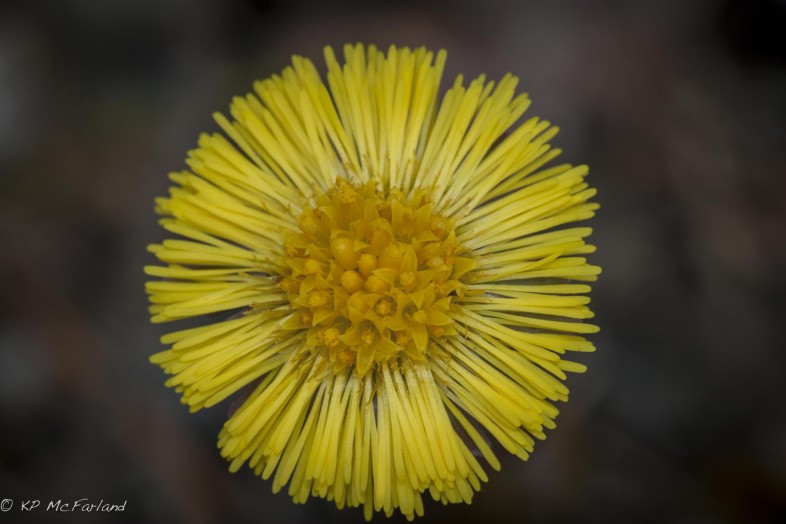
Coltsfoot (Tussilago farfara) blooming along a dirt road. / © K.P. McFarland
Sun Basking
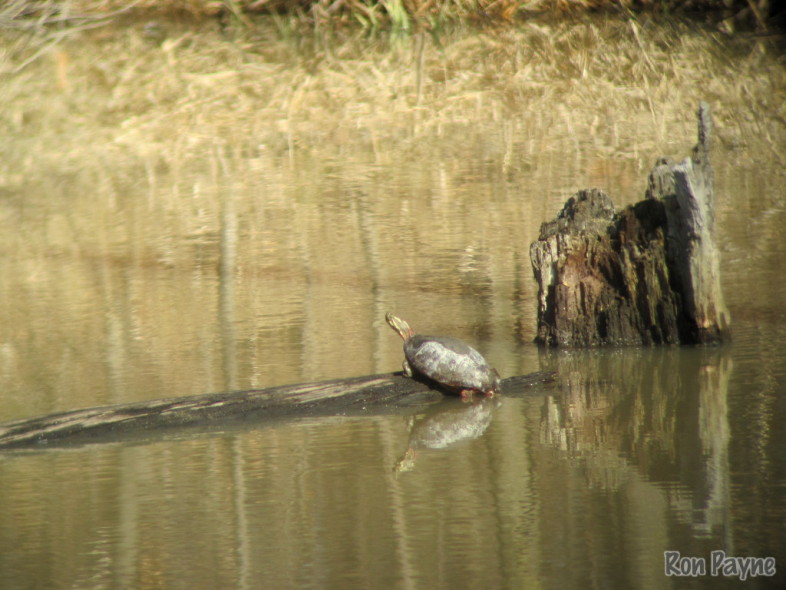
Painted Turtle basking in late March. /© Ron Payne
Under the ice of lakes and ponds the body temperature of the Painted Turtle averaged just 43 °F all winter long. But after ice out, sunny and warm weather brings the Painted Turtles out to bask. To be active, they must maintain an internal body temperature between 63–73 °F. When fighting infection, they can raise their temperature up to 8 °F higher than normal.
BUTTERFLIES AND SNOW
One of the odd events of March comes when butterflies take wing. These aren’t newly emerged individuals, but rather overwintering adults. Mourning Cloak, Milbert’s Tortoiseshell and Eastern Comma are among the species that slip into natural cracks in trees or under the clapboards on homes, and pass the winter in a state of torpor. When the sun emerges higher in the sky in March, some of these butterflies “feel the warmth” and take flight. Lacking nectar, they’ve got other matters in mind: spring breeding.
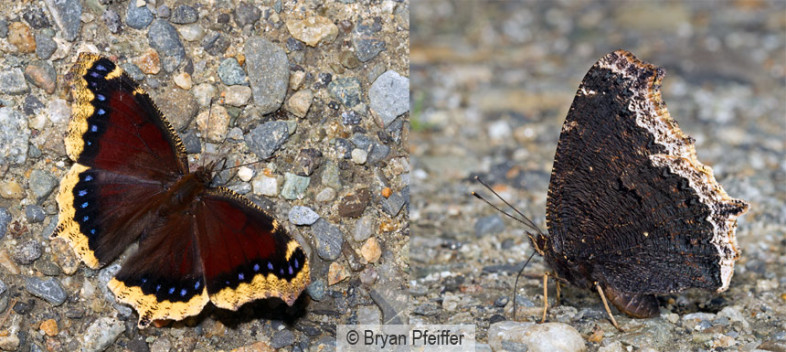
Mourning Cloaks (Nymphalis antiopa) – dorsal and ventral / © Bryan Pfeiffer
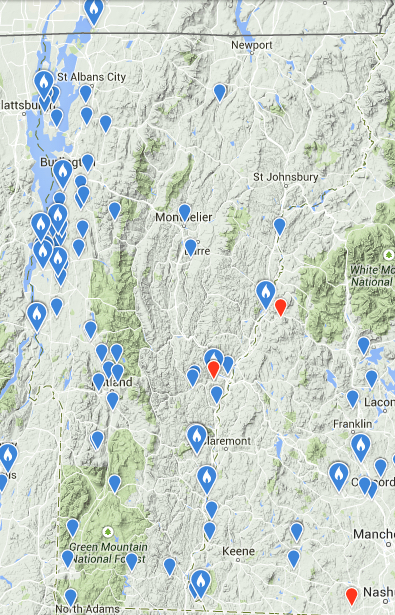
Sightings of Great Horned Owls reported to Vermont eBird in March.
EARLY NESTING
As songbirds begin to arrive, some Great Horned Owls have already completed incubation by the end of March.They’ve been sitting on eggs for about four weeks.
After hatching, the young owls fledge in 40 to 45 days, but remain dependent upon their parents for food until they can fend for themselves.
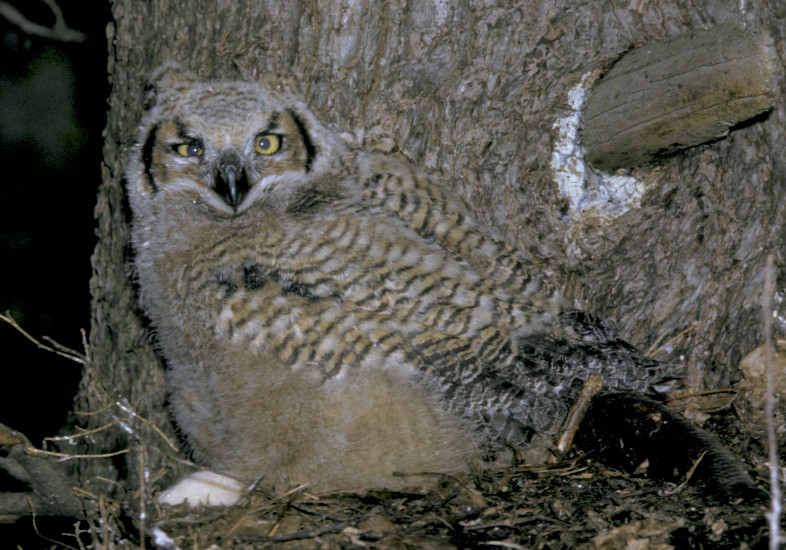
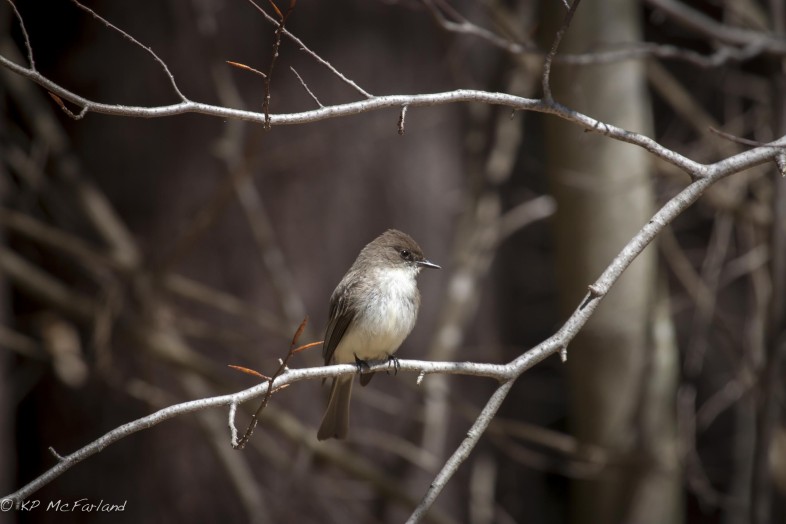

Nice postings, Kent. I really like the monthly field-guide idea. It is a little like Northern Woodland’s weekly guide, but more in-depth. Thanks
Thanks! Glad you are enjoying them. Here’s to spring!
Kent McFarland <http://onemeter2.wordpress.com/
I particularly like the variety of actors in the natural world you highlight with enough details to tweek my curiosity. Wood frogs won’t be long now.